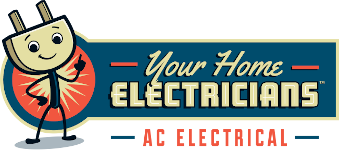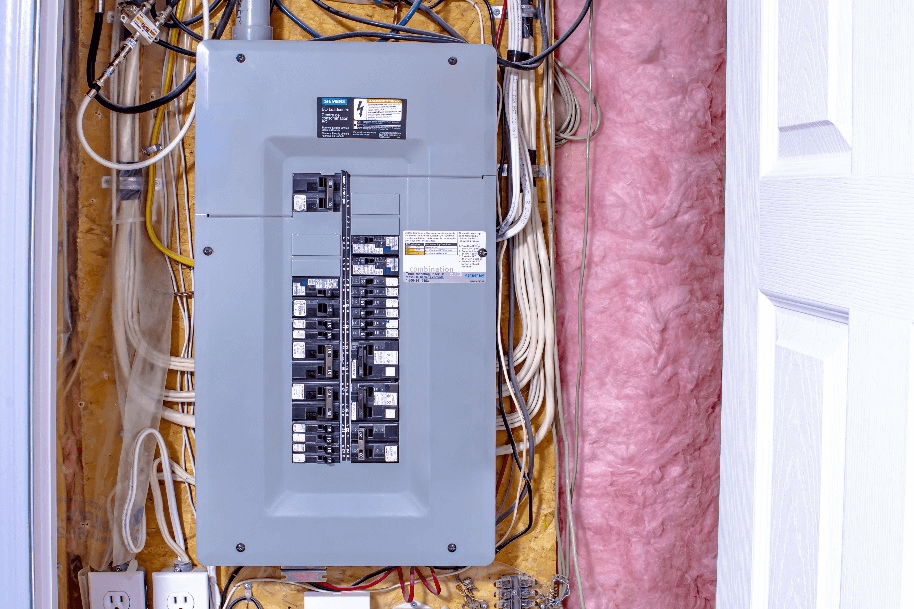The electrical panel in your home is where the magic happens, safely directing electricity throughout, whether to power your lights, your cell phone charger, or even your home’s heating and cooling systems. The hardest-working system in your home, electrical panels can simply wear out over time, or need to be upgraded to keep up with current safety standards. Everything eventually requires replacement and your home’s electrical panel is no exception.
Here are the top signs that you may need to replace your electrical panel:
Age – Electrical panels typically have a defined lifespan. Once a panel has reached a certain age, you may have trouble obtaining home insurance or even a mortgage. Insurers will often require you to upgrade to a new panel and wiring that meets modern safety standards.
Size or Capacity – Nowadays, everything runs off electricity, and an outdated panel may not be able to accommodate additional circuits or the increased load. Your electrical panel has a power rating that directly correlates with the size and how many breakers it can accommodate. Most homes today have 200 amps of power. An older panel may only handle 60 or 100 amps, which is not sufficient for today’s needs.
An underpowered panel will trip its breakers when overloaded, a sign of a safety issue as well as its need to be upgraded. If you are renovating, adding new high-consumption appliances, or are going to have additional people living in your home, you’ll want to discuss your requirements with a licensed electrician.
Electric Vehicle Charging Station – Electric vehicles are becoming more and more popular. Many homeowners are unaware of the electrical requirements to power their newly purchased vehicles. In some cases 60A or 100A panels are not sufficient to carry the load and a panel upgrade is necessary. Your Home ElectriciansTM will be able to advise you accordingly.
Lights That Dim or Flicker – Not only is this annoying, but this is a warning that your electrical panel cannot meet your needs. When your electrical panel is older or underpowered, or if your wiring is faulty, you may experience flickering or dimming power and should get things inspected sooner than later.
Signs of Scorching – Inside your electrical panel, you may notice signs of scorching. These signs can be found at the breaker. Upon inspection, you might also notice scorching around the wires and even melted insulation. This may be caused by wiring with damaged insulation which can then produce electrical arcs, generating high amounts of heat which can then cause a fire. If you see burned or charred areas or detect a burned smell, call a pro right away!
Tripping Breakers – Breakers that routinely trip are not necessarily a sign that your panel needs replacement. It may simply mean that you have a bad breaker. It does sometimes indicate a potential electrical problem, either with your wiring or your electrical panel. Breakers usually trip when the circuit is overloaded, the wire is undersized, or if there is a fault in the circuit. Whatever the reason, a licensed electrician can solve the problem quickly, usually without the expense of a new panel.
Rust Inside – If you detect rust inside your electrical panel, call an electrician immediately. This is a clear sign that moisture has entered your panel, which is never a good thing. It may be simply due to humidity, but electricity and water are a bad combination, and you’ll sleep more soundly once an electrician has had a closer look.
You Need Multiple Power Strips – Power strips are easy to overload. Your home is wired to handle only so much, and power strips can add a significant load. Not only will this cause your breakers to trip, but you can cause damage to the items plugged in, or even a fire. If you don’t have enough outlets, adding breakers to your panel is a relatively easy fix that creates a safer home.
Old or Bad Wiring – Bad or outdated wiring is hazardous. Some things electricians routinely discover include mismatched breaker brands, double-tapped breakers and messy wiring. From wear and tear to poorly executed DIY fixes, these can make it necessary to replace or upgrade your electrical panel.
Subpanel Consolidation – Some homes may have subpanels installed in addition to their main electrical panel. These are often found in garages, workshops, in-law suites or home additions. Should you decide to consolidate these subpanels, you’ll probably need to upgrade your main electrical panel. A newer panel will offer improved safety while allowing additional outlets and circuit breakers.
The consequences of ignoring ageing, damaged or failing electrical panels are serious. By recognizing the signs early, you may be able to avoid a costly replacement. A quick inspection by Your Home ElectriciansTM who are certified, experienced, and ESA approved will not only save you money but will provide peace of mind, knowing your family and home are safe. Leave the installation of your electrical breaker panel to the pros; call Your Home ElectriciansTM today! 416-698-8100




